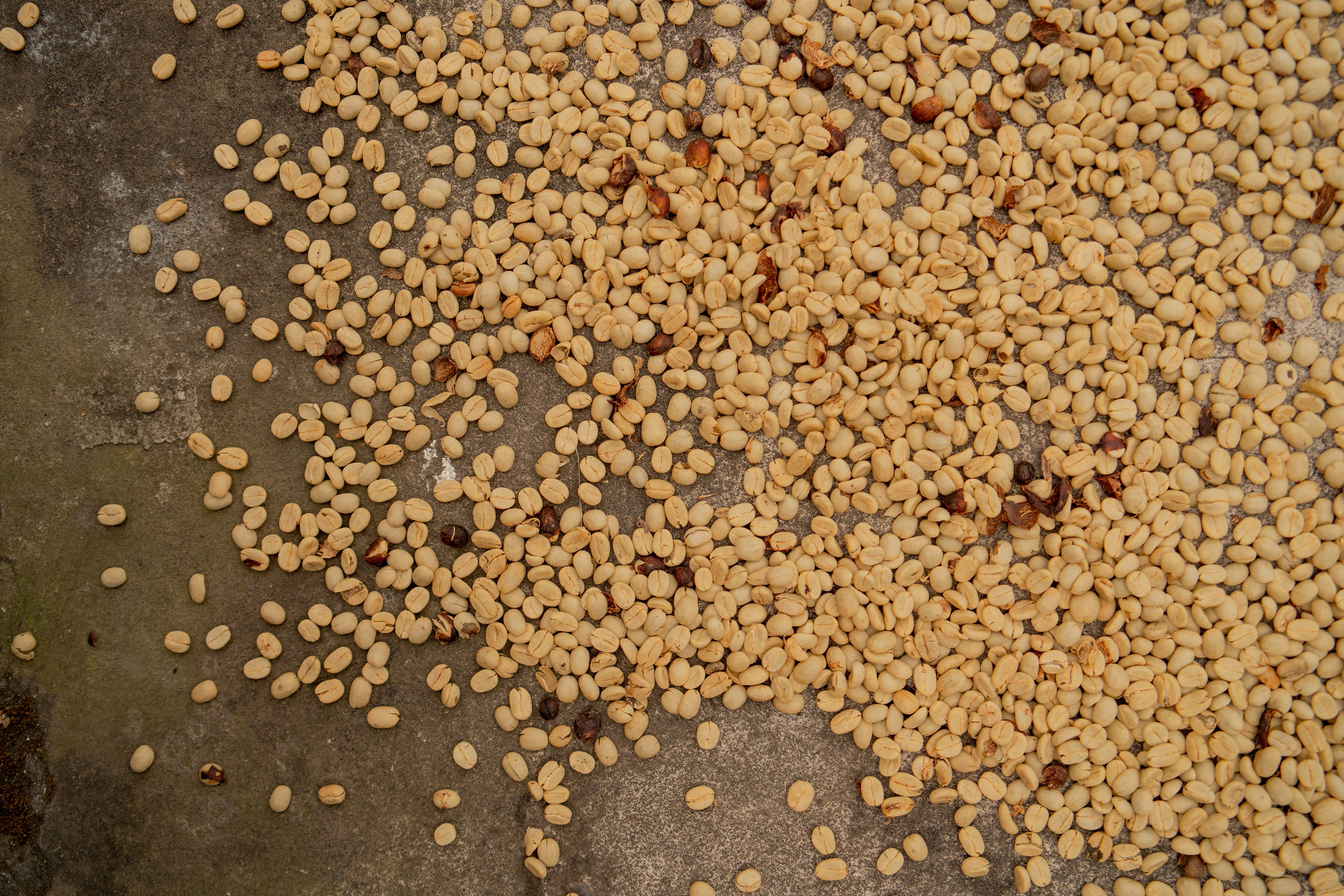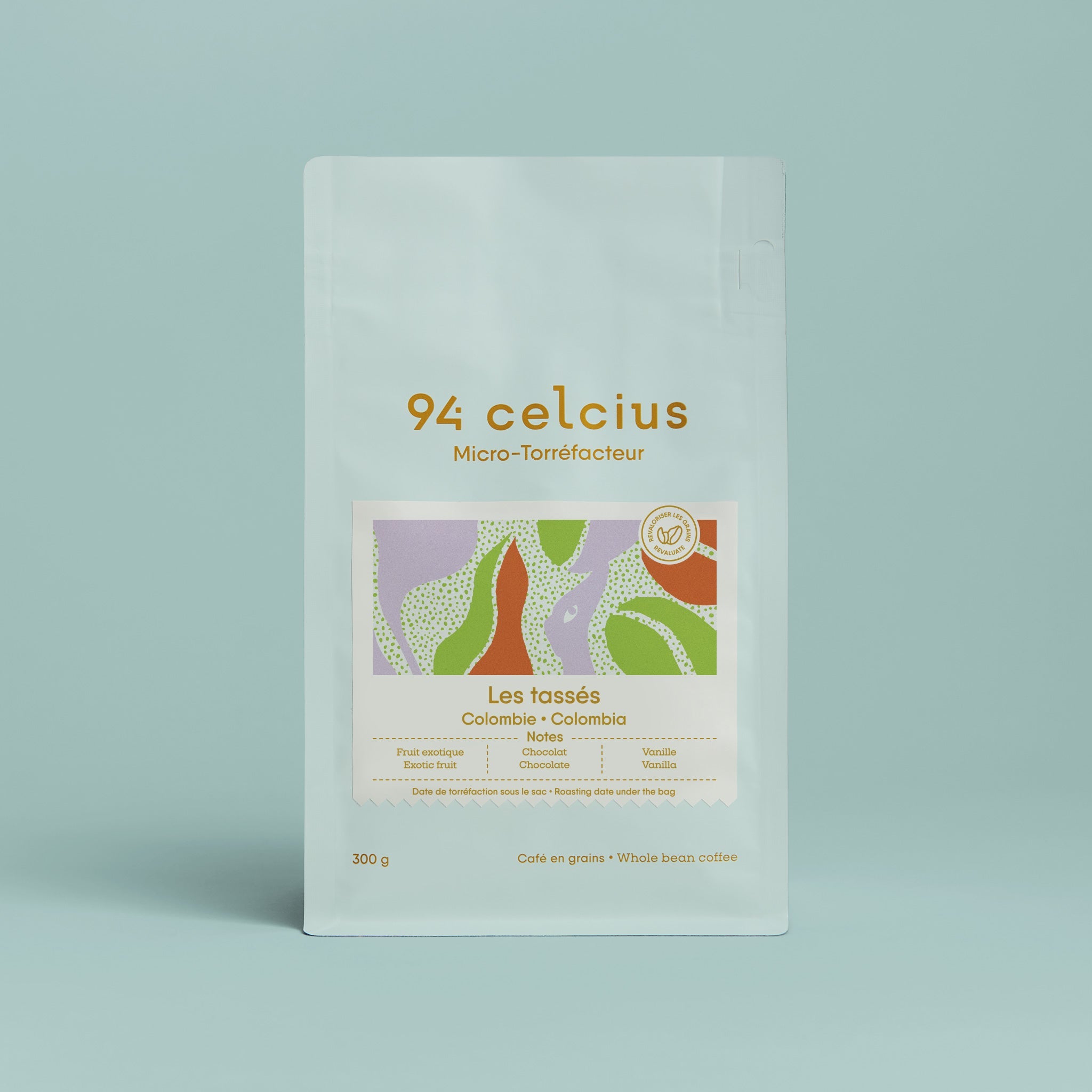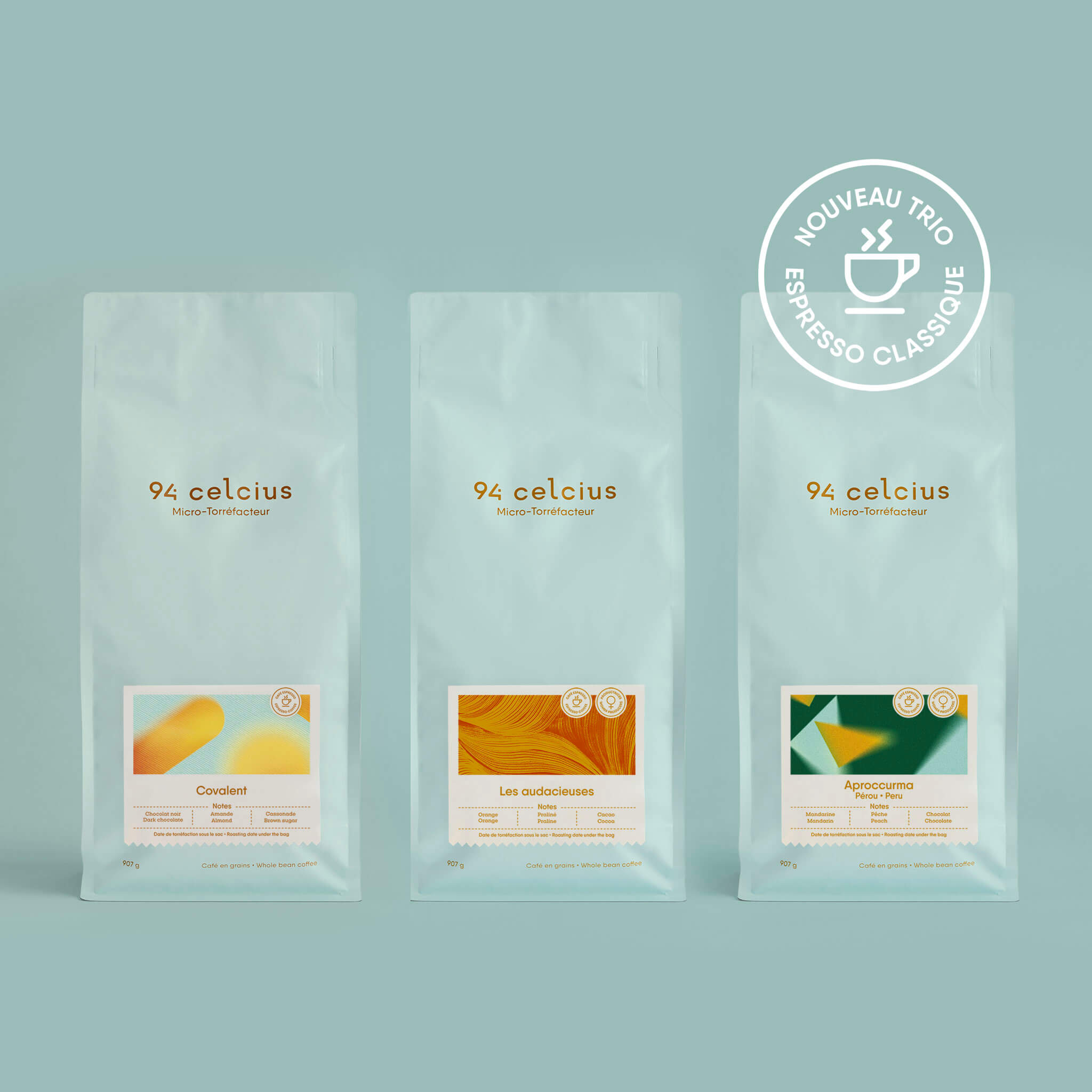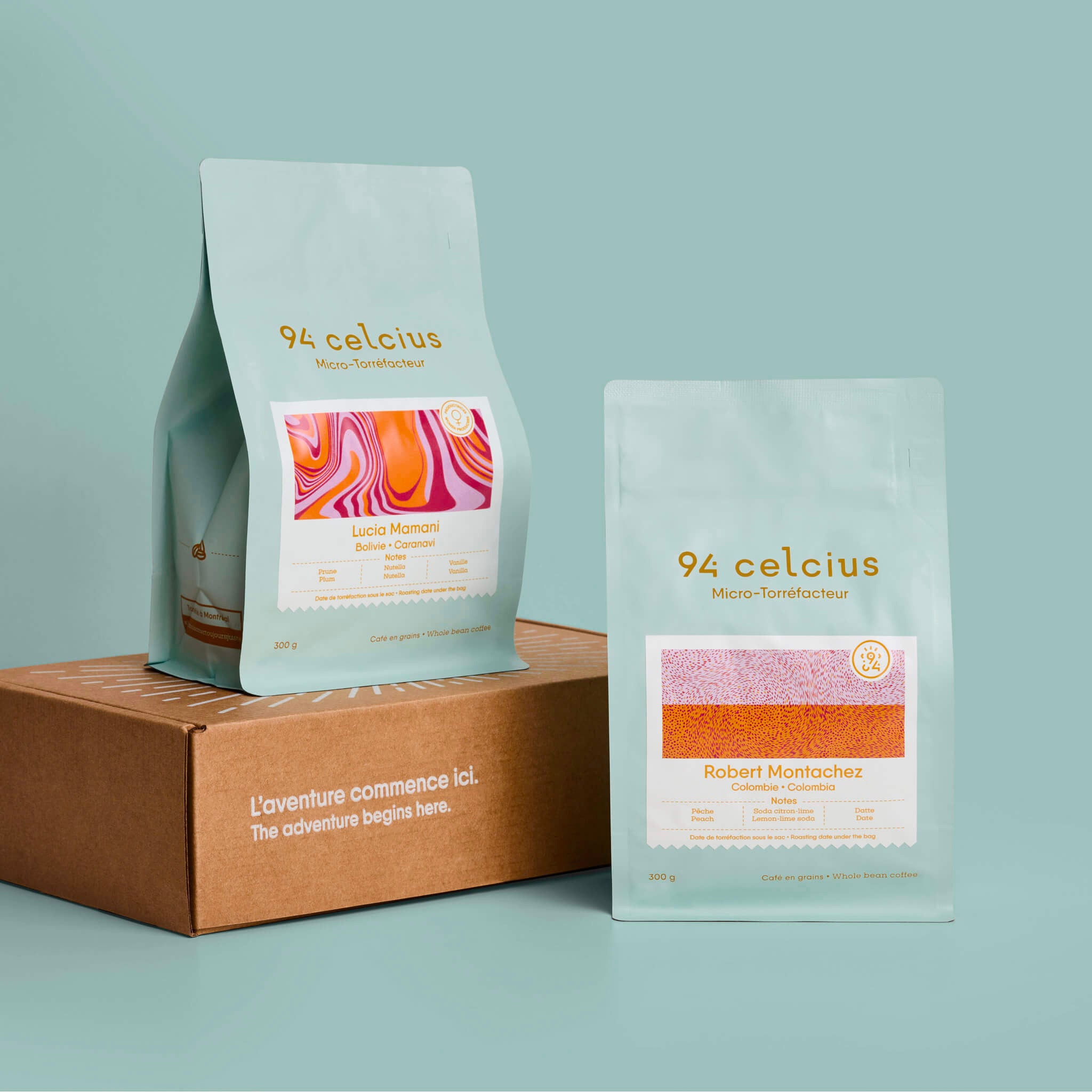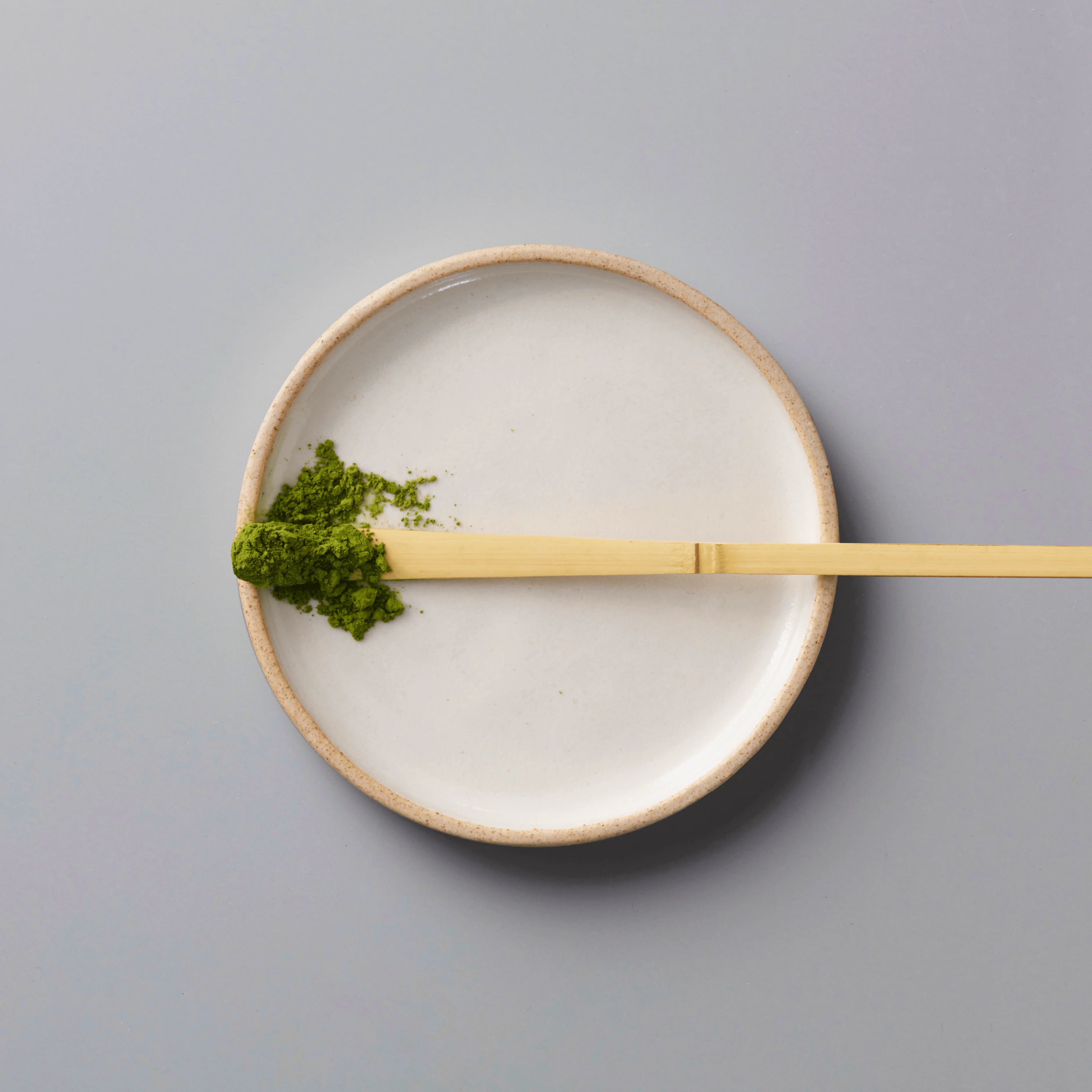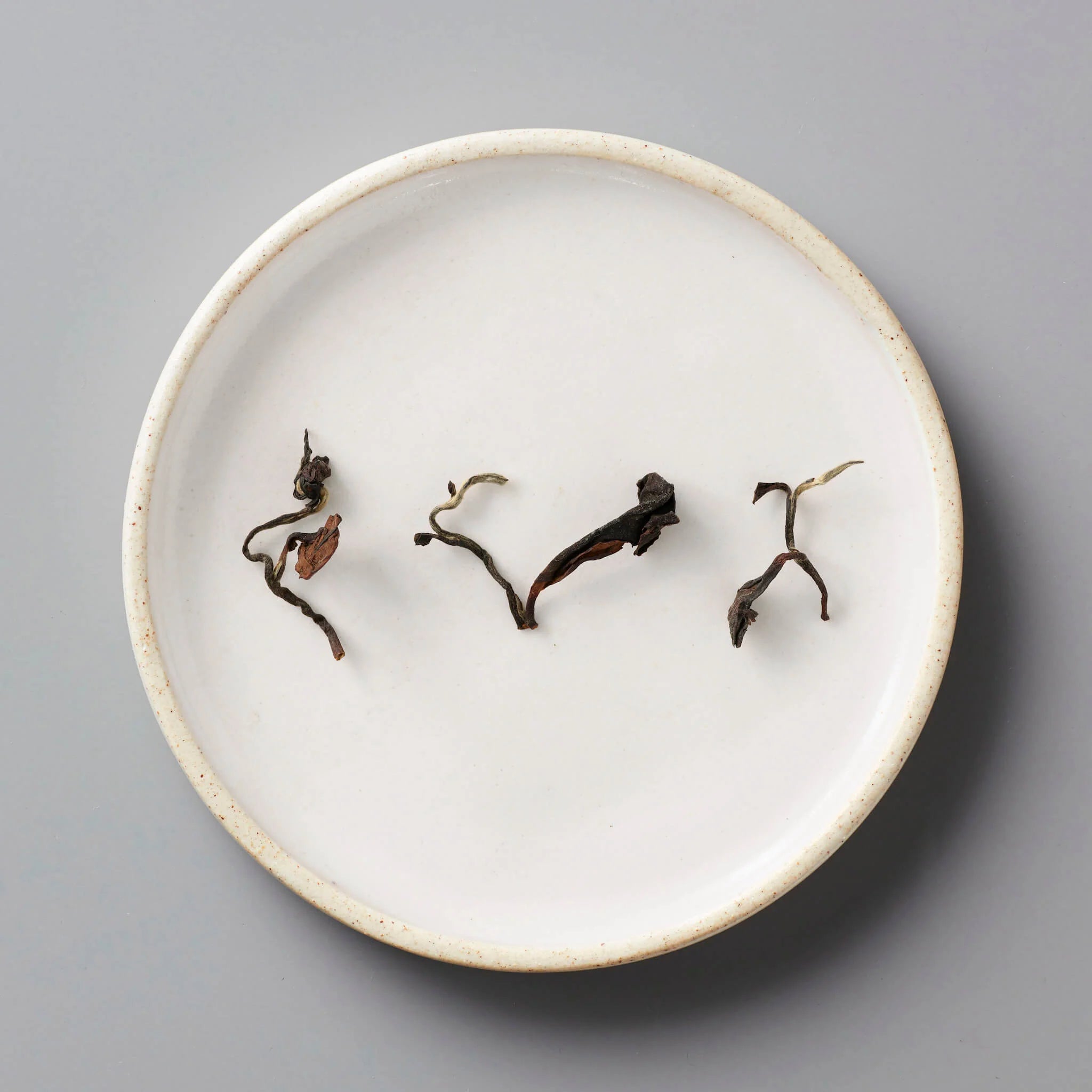The world of coffee is fascinating, but often misunderstood, especially when it comes to the impact of green coffee beans on the final quality of the cup. Just like fruits and vegetables, coffee beans can have various physical and chemical defects that influence not only their appearance, but also the taste and aroma of the coffee. At 94 Celcius, we believe that a well-grown bean deserves a second chance. With this in mind, we have created Les Tassés a blend skilfully composed from beans with minor defects, but whose impact on aromatic quality is negligible. This blend, the work of producer Wilton Benitez, reveals gourmet notes of exotic fruit and vanilla, while reducing food waste.
What is a green coffee defect?
Before reaching your cup, coffee beans undergo many crucial stages, from cultivation to roasting. Each stage presents challenges that can lead to imperfections in the bean. According to the Specialty Coffee Association (SCA) classification, coffee beans are categorized according to the presence of visible defects, distinguished into primary and secondary defects. These defects are assessed on a 350 g sample of green coffee. A coffee is considered to be of special quality if it has zero primary defects and fewer than five secondary defects. However, these physical imperfections are not necessarily synonymous with poor cup quality.
